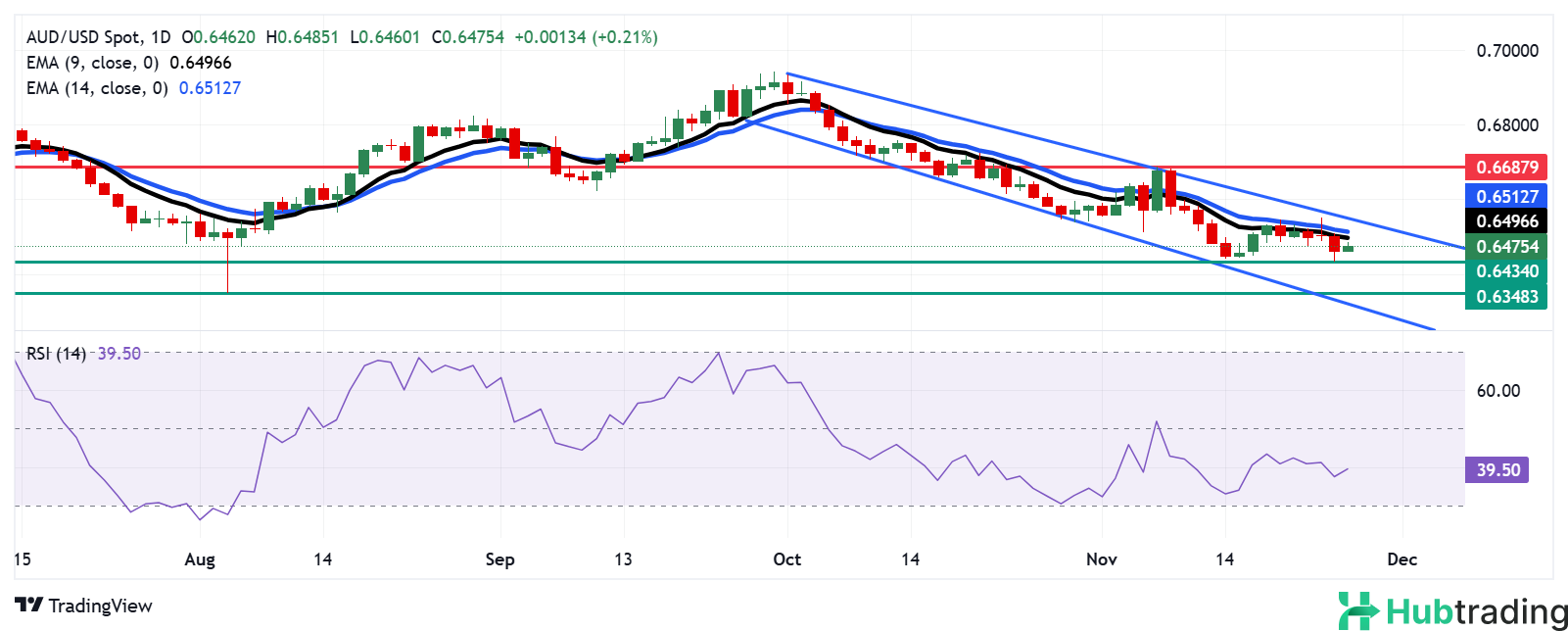- The Australian Dollar strengthens as the US Dollar remains subdued, buoyed by optimism in the bond market.
- Australia's Monthly Consumer Price Index (CPI) showed a steady 2.1% year-over-year increase in October, slightly below the expected 2.3% rise.
- The November FOMC Meeting Minutes revealed that policymakers are taking a cautious approach toward rate cuts, adding further pressure on the US Dollar.
The Australian Dollar (AUD) breaks its three-day losing streak on Wednesday as the US Dollar (USD) remains subdued amid optimism in the bond market. The Reserve Bank of Australia's (RBA) hawkish stance on future interest rate hikes also provides support for the AUD. Traders are awaiting the release of the US Personal Consumption Expenditure (PCE) Price Index and quarterly Gross Domestic Product (GDP) data later in the North American session.
Australia's monthly Consumer Price Index (CPI) rose by 2.1% year-over-year in October, unchanged from the previous month but below the expected 2.3% increase. This marked the lowest inflation rate since July 2021, remaining within the central bank's 2-3% target range for the third consecutive month.
The upside potential for the AUD/USD pair may be limited, however, due to dampened market sentiment following President-elect Donald Trump's announcement of a 10% tariff increase on all Chinese goods entering the US. As the US and China are key trading partners, any shift in China's economy could negatively impact Australian markets.
China’s Ambassador to Australia emphasized on Tuesday that US trade policies would have a significant impact, expressing China’s expectation for dialogue with the US to manage trade relations effectively.
- The Australian Dollar (AUD) receives support from hawkish sentiment surrounding the Reserve Bank of Australia (RBA) as market participants focus on upcoming interest rate moves. The latest Federal Open Market Committee (FOMC) Meeting Minutes from November 7 show that US policymakers are taking a cautious approach to rate cuts, noting easing inflation and a strong labor market.
- US President-elect Donald Trump is expected to nominate Jamieson Greer as US Trade Representative, reinforcing the prominence of tariffs in Trump’s economic agenda.
- Chicago Fed President Austan Goolsbee suggested that the Fed is likely to continue lowering rates toward a neutral stance, while Minneapolis Fed President Neel Kashkari indicated that another rate cut in December may still be on the table.
- In the bond market, US Treasury Secretary nominee Scott Bessent, a seasoned Wall Street figure, is expected to bring fiscal conservatism, contributing to bond market gains.
- Recent preliminary S&P Global US Purchasing Managers’ Index (PMI) data have reinforced expectations that the Federal Reserve may slow the pace of rate cuts, with futures traders now assigning a 57.7% probability of a 25-basis point rate cut in December, according to the CME FedWatch Tool.
- On the Australian front, the country’s four largest banks are predicting the Reserve Bank of Australia's first rate cut, with Westpac revising its forecast to May (from February). National Australia Bank (NAB) also expects a rate cut in May, while Commonwealth Bank of Australia (CBA) and ANZ cautiously predict a February cut.






